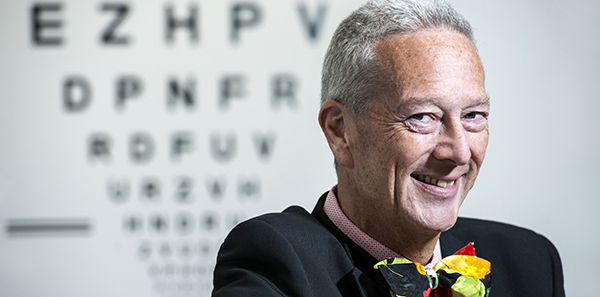1:30min

Professor Emeritus Nathan Efron
______________________________
By Ashleigh McMillan
Journalist
Professor Nathan Efron is urging practitioners to complete the 2017 Survey of Contact Lens Prescribing in order to contribute useful data on the profession.
The survey, now in its 18th year in Australia, collects data on the types of lenses and designs that practitioners are prescribing within their practices. The one-page survey requires optometrists to fill in information about the next 10 patients they fit for contact lenses.
Professor Efron says that the survey will allow optometrists to compare their prescribing habits against those of the rest of the country.
‘It gives optometrists a mini audit of what they’re doing in their own practice. When we publish the results in Pharma in December 2017, they can compare their own prescribing trends to the Australian national averages,’ he said.
‘In terms of the bigger picture, it helps us to understand how trends are moving internationally. We can guide the contact lens industry, and essentially prompt it through our surveys to put its energies into developing better lenses of certain types where we see deficiencies in our survey result.
‘In an indirect way, by filling out the survey, you’re helping improve contact lens fitting and improve what the industry can give to us through this sort of understanding,’ he said.
The survey was first launched in the United Kingdom in 1996 by Professor Efron and Professor Phillip Morgan, who were joined by Professor Craig Woods. The wider survey now encompasses about 40 countries worldwide and is used to inform practitioners of international contact lens industry trends.
Professor Efron says the survey helps clinical researchers to put their own work into context, with the ability to illuminate changes in contact lens prescribing year on year.
Trend plotted
The survey has plotted the uptake of daily disposables since they came onto the market, which Professor Efron says has increased to the point where 35 per cent of all soft lenses prescribed in the world are daily disposable lenses.
‘Australia is probably the leading country in the world. Around 70 per cent of all new lenses prescribed here are daily disposable lenses, whereas in some countries that number is zero. So why is there that massive discrepancy?
‘We did an analysis where we plotted the percentage of lenses which are daily disposables on one axis, and the GDP of the countries on the other axis. What we found very simply was that the wealthier the country, the greater the percentage of daily disposables prescribed in that country.
‘That might seem obvious to you but we’ve got the hard evidence and it’s a strong indication to industry that one of the main drivers of the uptake of daily disposable lenses is really the cost of the product.
‘So it’s really affecting policy of contact lens companies and their pricing, and allows the industry to monitor how successful products are when they’re first introduced to the market. With more responses the data become just a little bit more solid and our confidence in the data is that little bit greater,’ Professor Efron said.
Optometry Australia members were sent an email on 2 February, encouraging them to participate in the survey, which closes on 30 April. The survey form is accessible online.
Read the Efron, Morgan and Woods Contact lens prescribing trends 2016 report in Pharma.